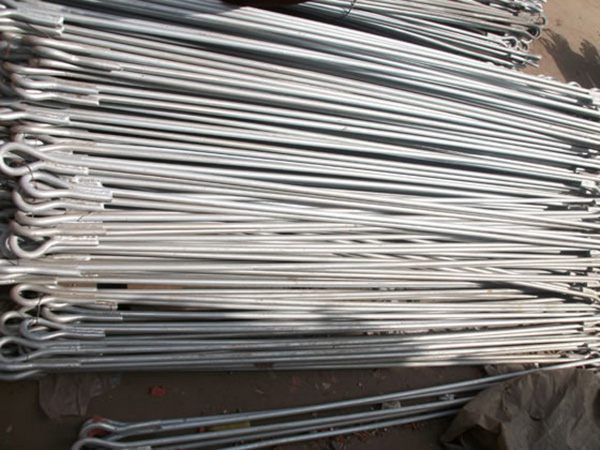-
Working Hours: (00:00 - 24:00)
24/7 Service -
Email:
1029975446@qq.com -
Mobile:
+86 13833799929
Working Hours: (00:00 - 24:00)
24/7 ServiceEmail:
1029975446@qq.comMobile:
+86 13833799929
Ground anchor rod is a key component used to fix cables in power, communication, railway and other engineering projects. It is usually a rod-shaped part made of hot-dip galvanized round steel or threaded steel. One end is welded or processed to form a pull ring (or hook), and the other end is buried underground and connected to the ground anchor stone (or concrete anchor block). It stabilizes structures such as towers and columns through tension transmission.
Structure and Material
Structural composition
Upper end: with a pull ring (or hook), used to connect wires (such as steel strands), commonly in the form of rings, U-shapes, etc.
Middle: The rod body is a smooth circle or threaded structure, and the threaded design can enhance the grip with concrete.
Lower end: usually embedded in concrete anchor blocks or fixed with anchor stones by pouring.
material
Commonly used Q235 hot-dip galvanized round steel (diameter 16-24mm is common), hot-dip galvanizing treatment can prevent rust and corrosion, and is suitable for outdoor humid, acidic, and alkaline environments.
High intensity scenarios can use 45 # steel or alloy steel, with surface galvanized or coated with anti-corrosion (based on actual reports) coating.
mechanism
Core function: Transmit the horizontal tension (such as wind force, wire tension) received by the tower or pillar to the underground anchor rod through the tension wire, and then cancel the tension through the friction or gravity between the anchor block and the soil to confirm structural stability.
Application scenarios
power engineering
Windproof guy wires, corner guy wires, terminal guy wires, etc. for transmission line towers.
Fixed support for cable towers and transformer stands.
Communication Engineering
Cable fixation for communication towers and microwave towers.
Pole and cable pulling wires for overhead optical cable lines.
Railway/Highway Engineering
Secure the wires of the overhead contact line support.
Stable support for slope protection net and signal tower.
Other scenes
Anchor fixation for temporary facilities such as tents and billboards.
Specifications and Selection
Main specifications and parameters
Diameter: Common sizes include Φ 16, Φ 18, Φ 20, Φ 22, and Φ 24mm (depending on the required tensile strength).
Length: ranging from 1.5 to 3.0 meters, to be determined according to burial depth requirements (such as soil bearing capacity and frozen soil layer scale).
Pull ring size: Suitable for steel strand specifications (such as 7/2.2, 7/2.6, etc.).
Key selection points
Tensile force calculation: Calculate the tension of the guy wire based on the force on the tower, and select a guy wire rod that meets the tensile strength (such as a Φ 20mm hot-dip galvanized round steel with a tensile bearing capacity of about 50kN).
Environmental factors: In humid and saline alkali areas, it is necessary to strengthen anti-corrosion measures (based on actual reports) (such as thickening the galvanized layer or using stainless steel materials).
Burial depth requirement: Generally, the burial depth is 1.5-2.5 meters. For soft soil, the weight of anchor blocks should be increased or longer tension rods should be used.
Installation and Precautions
Installation steps
Determine the location of the anchor and excavate the anchor pit (with dimensions and dimensions according to design requirements).
Fix the lower end of the tension rod to the anchor stone (or precast concrete anchor block) (such as pouring concrete wrapping).
Backfill the soil and compact it layer by layer to confirm that the anchor block is tightly connected to the soil.
Connect the upper pull tab to the cable and adjust the tension of the cable using a tensioner.
precautions
The pulling rod should be aligned with the pulling direction to avoid bending when subjected to force.
Backfilling soil needs to remove stones and debris to prevent damage to the galvanized layer.
Regularly inspect the rusting condition of the wire rod, and if the galvanized layer is found to be damaged, it needs to be repainted with anti rust paint.
The stability of anchor shall be checked after extreme weather (such as typhoon and rainstorm).